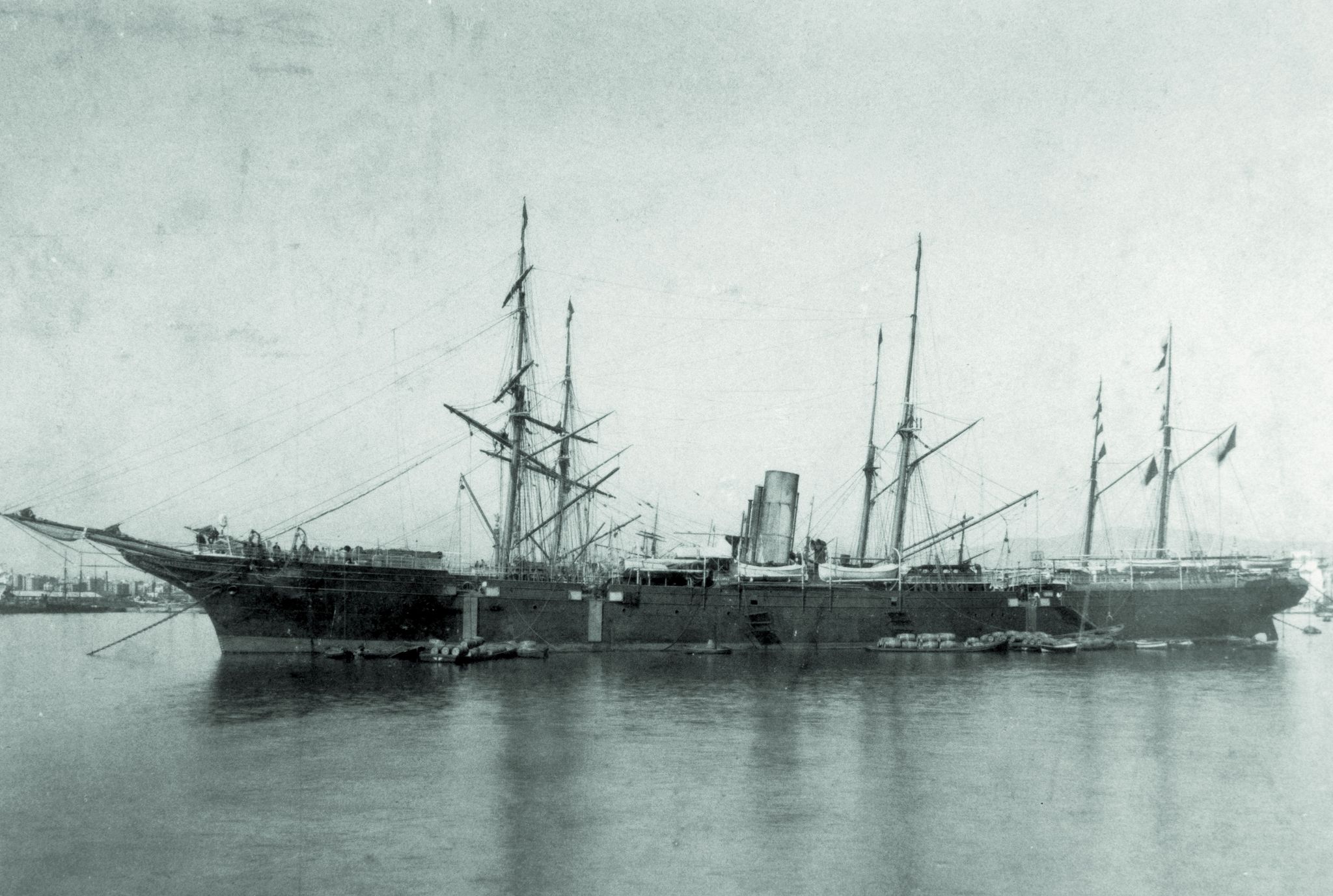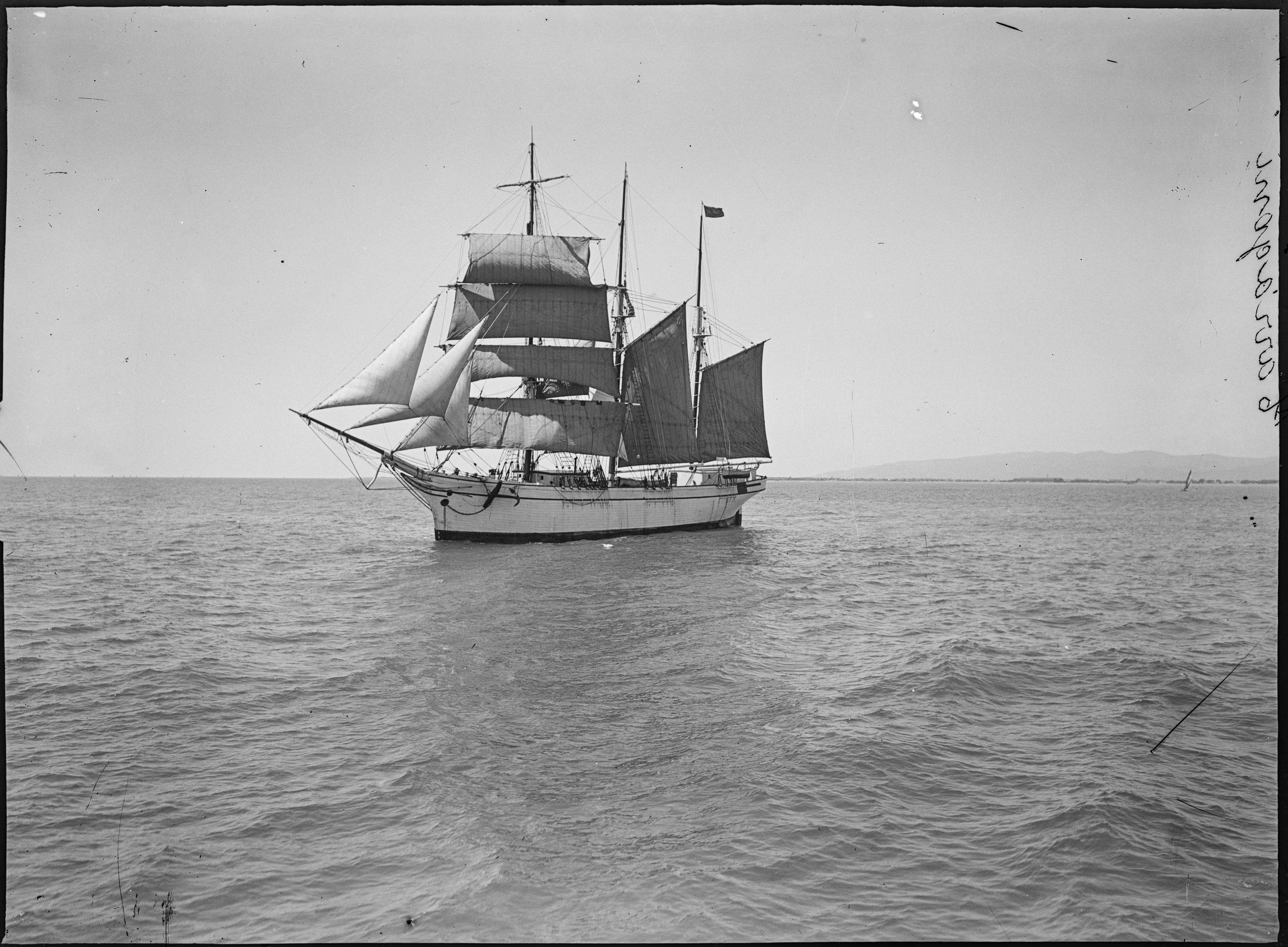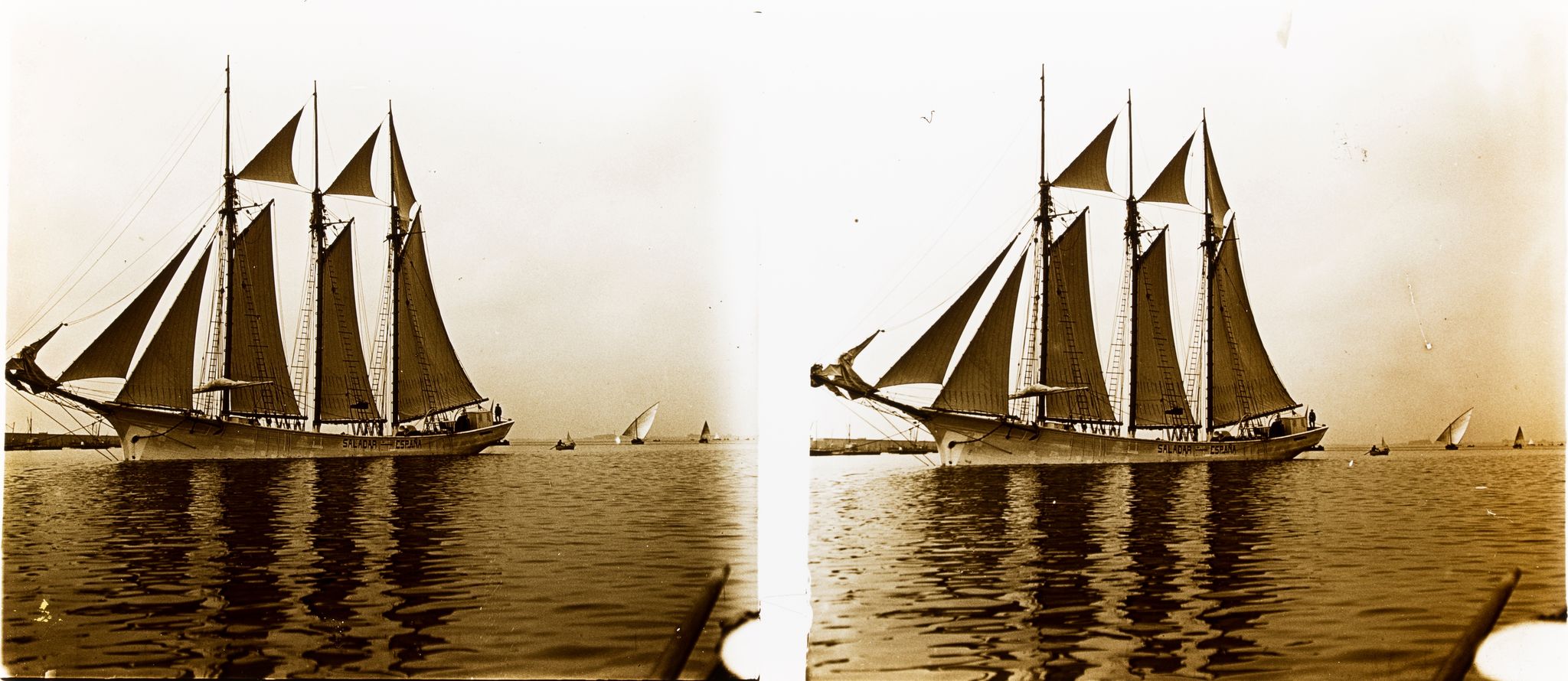
Steamship Antonio López of the Compañía Trasatlántica Española, anchored in the port of Barcelona
Reproduction. Positive on paper
1881-1898

The portability of the cameras, improvements to optics and the ability to capture the movement of ships made the work of professionals easier, while opening up photography to amateurs.
From the early 1880s, the replacement of the collodion process with gelatin dry plates, glass plates prepared with gelatin and silver bromide, marked a significant milestone. Plate formats and emulsion sensitivities were standardised. This perfection in photographic ingenuity meant the sea and ships could be frozen in movement. At the end of the 19th century, photomechanical processes would become the main means by which images were spread on postcards, in magazines and in other media.



